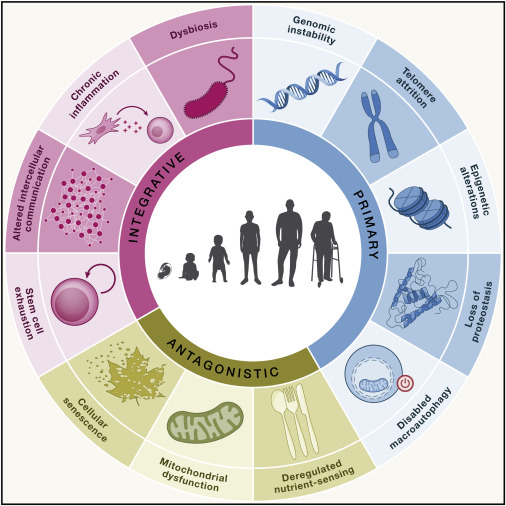New Research Reveals Glucosamine’s Surprising Anti-Aging Benefits
In addition to extending the lifespan of mice, glucosamine reduces the risk of multiple age-related diseases in adults.
Highlights
- In humans, glucosamine is associated with lowering the risk of all-cause mortality and age-related conditions, such as cancer, lung disease, liver disease, and heart disease.
- In addition to prolonging lifespan, animal studies suggest that glucosamine alleviates several biological drivers of aging, including inflammation and mitochondrial dysfunction.
What if the world’s most common over-the-counter dietary supplement, already known for its joint health benefits, held a key to reducing the risk of several age-related chronic diseases? A recent study, published in Aging Clinical and Experimental Research, delves into just this possibility, offering intriguing insights into the potential anti-aging properties of glucosamine.
Glucosamine Associated with Lower Risk of Age-Related Conditions
To unravel glucosamine’s broader impact, researchers drew data from the UK Biobank, the world’s most comprehensive dataset of biological, health, and lifestyle information. In this study, 52,525 regular glucosamine users were meticulously matched with an equal number of non-users. Over a median follow-up period of 13.8 years, the health trajectories of these matched individuals were carefully monitored.
After rigorous analysis and correcting for potential false discoveries, regular glucosamine use was found to be significantly associated with a reduced risk of seven distinct age-related non-communicable diseases:
- Esophageal Cancer: A 27% lower risk for those regularly taking glucosamine. This is a significant reduction for a serious condition.
- Gout: A 19% lower risk. Gout, a painful form of arthritis, is often associated with aging and metabolic factors.
- Chronic Obstructive Pulmonary Disease (COPD): An encouraging 14% lower risk. COPD is a progressive lung disease that severely impacts quality of life in older adults.
- Colorectal Cancer: A 14% lower risk. This common cancer is a major health concern as people age.
- Chronic Liver Disease: A 13% lower risk. Liver health is crucial for overall well-being, and chronic conditions can lead to severe complications.
- Heart Failure: A 12% lower risk. Heart failure is a debilitating condition that becomes more prevalent with age.
- Coronary Heart Disease: An 8% lower risk. This includes conditions like heart attacks and angina, major causes of mortality and morbidity globally.
These numbers, while seemingly small for some conditions, represent a statistically significant reduction in risk across a spectrum of diseases that commonly afflict an aging population. The consistent pattern of reduced risk across such diverse conditions hints at a fundamental mechanism through which glucosamine might be exerting its protective effects.
Previous Human Studies: Glucosamine’s Anti-Aging Properties
Previous human studies suggest that glucosamine has anti-aging properties. For example, a study of nearly 500,000 men and women from the UK Biobank dataset showed that habitual glucosamine supplementation was associated with a reduced risk of all-cause mortality and mortality due to cancer, cardiovascular disease (CVD), respiratory diseases, and digestive diseases. Other observational studies point to glucosamine reducing the risk of type 2 diabetes, stroke, and lung cancer. It may also slow the progression of liver disease.

While the findings of these studies are promising, it’s crucial to remember that they are observational studies. Observational studies can identify associations, but they cannot definitively prove cause and effect. In other words, while regular glucosamine use is associated with the reduced risk of age-related diseases and mortality, observational studies cannot unequivocally state that glucosamine caused this reduction. There might be other factors at play.
Nevertheless, the consistency and strength of the associations across multiple chronic diseases and even mortality are compelling. These observational studies provide a strong foundation and impetus for further investigation, particularly randomized controlled trials (RCTs). RCTs are considered the gold standard in medical research because they can establish causality by randomly assigning participants to receive either the intervention (glucosamine) or a placebo, thereby minimizing bias.
Glucosamine Alleviates Several Underlying Drivers of Cellular Aging
While this study provides compelling evidence of an association between regular glucosamine use and reduced risk of several age-related diseases, it doesn’t definitively explain how glucosamine achieves these effects. However, there are animal studies that shed light on its potential anti-aging mechanisms.
Inflammation
Chronic low-grade inflammation is an underlying biological driver of aging, referred to as a hallmark of aging, and is implicated in the development and progression of numerous age-related diseases, including cardiovascular disease, cancer, and neurodegenerative disorders. Glucosamine has been shown in some studies to possess anti-inflammatory properties, inhibiting certain inflammatory pathways such as the NF-𝜅B pathway.

Oxidative Stress
Oxidative stress occurs when the excessive buildup of reactive oxygen species (ROS) overwhelms our cellular antioxidant defense systems. As we age, oxidative stress worsens, contributing to cellular dysfunction and disease. Some research suggests that glucosamine may have antioxidant effects, helping to neutralize ROS and protect cells from damage. This protective action could contribute to the observed reductions in cancer and other chronic diseases.
Mitochondria and Prolonging Lifespan
Supporting the idea that glucosamine is an anti-aging or longevity molecule, it has been shown to prolong the lifespan of nematodes and mice. The extension in lifespan was attributed to the formation of new mitochondria, which is critical for cellular aging. Indeed, mitochondrial dysfunction is a hallmark of aging. Additionally, in mice, blood glucose levels were lowered by glucosamine supplementation, which could explain how it could reduce the risk of type 2 diabetes in humans.
When to Take Glucosamine
In addition to showing lower rates of age-related chronic diseases in glucosamine users, the study found that glucosamine use was related to a 51% higher risk of atrial fibrillation (AF) in participants younger than 65. This is a major safety concern, considering that this heart rhythm disorder can lead to stroke, heart failure, or even a heart attack. A mouse study showed that glucosamine induced electrical and structural changes to the heart, which could contribute to AF susceptibility.

New RCTs may help elucidate whether supplementation with glucosamine leads to AF by determining its safety, tolerability, and dosing. Still, a recent meta-analysis of 146 studies, focusing on the effect of glucosamine and/or chondroitin, a component of cartilage, on arthritis and joint pain, concluded that both are generally safe and well-tolerated. The two compounds are often combined, and glucosamine is given at a dose of 1500 mg. This dose of glucosamine, along with 1200 mg of chondroitin, was shown to reduce inflammation in a 2015 RCT.
Thus, notwithstanding the potential risk of AF, 1500 mg of glucosamine may potentially contribute to promoting health and longevity by reducing the risk of multiple age-related diseases via reducing inflammation and oxidative stress. Individuals with higher-than-normal inflammation levels, particularly individuals over the age of 65, may benefit the most from glucosamine supplementation.

